Effect of Foam Parameters on Cohesionless Soil Permeability and Its Application to Prevent the Water Spewing
Abstract
:1. Introduction
2. Materials and Methods
2.1. Foam Formation
2.2. Foaming Agents and the Test Method
2.3. Permeability Test
3. Permeability Test Results and Discussion
3.1. Effect of
3.2. Effect of FER
3.3. Effect of FIR
4. Field Experiments
4.1. Background
4.2. Water Spewing Problems
4.3. Effect of Foam on Water Spewing
5. Conclusions
Author Contributions
Funding
Conflicts of Interest
References
- Zumsteg, R.; Plötze, M.; Puzrin, A. Effects of dispersing foams and polymers on the mechanical behaviour of clay pastes. Géotechnique 2013, 63, 920–933. [Google Scholar] [CrossRef]
- Martinelli, D.; Peila, D.; Campa, E. Feasibility study of tar sands conditioning for earth pressure balance tunneling. J. Rock Mech. Geotech. Eng. 2015, 7, 684–690. [Google Scholar] [CrossRef] [Green Version]
- Wei, K. On the “Ideal Soil” in the Earth Pressure Balanced Shield Tunnelling. Urban Mass Transit. 2007, 10, 67–70. [Google Scholar] [CrossRef]
- Budach, C.; Thewes, M. Application ranges of EPB shields in coarse ground based on laboratory research. Tunn. Undergr. Space Technol. 2015, 50, 296–304. [Google Scholar] [CrossRef]
- EFNARC-Specification and Guidelines for the Use of Specialist Products for Mechanized Tunnelling (TBM) in Soft Ground and Hard Rock, Soft Ground and Hard Rock Tunnelling. Available online: http://www.efnarc.org/publications.html (accessed on 3 April 2005).
- Thewes, M.; Budach, C.; Galli, M. Laboratory tests with various conditioned soils for tunnelling with earth pressure balance shield machines. Tunn. Int. J. Subsurf. 2010, 6, 21–30. [Google Scholar]
- Wu, Y.; Mooney, M.A.; Minsu Cha, M. An experimental examination of foam stability under pressure for EPB TBM tunneling. Tunn. Undergr. Space Technol. 2018, 77, 80–93. [Google Scholar] [CrossRef]
- Quebaud, S.; Sibai, M.; Ehenry, J. Use of chemical foam for improvement in drilling by earth-pressure balanced shields in granular soils. Tunn. Undergr. Space Technol. 1998, 13, 173–180. [Google Scholar] [CrossRef]
- Peila, D.; Picchio, A.; Chieregato, A. Earth pressure balance tunnelling in rock masses: Laboratory feasibility study of the conditioning process. Tunn. Undergr. Space Technol. 2013, 35, 55–66. [Google Scholar] [CrossRef]
- Peila, D.; Oggeri, C.; Borio, L. Using the Slump Test to Assess the Behavior of Conditioned Soil for EPB Tunneling. Environ. Eng. Geosci. 2009, 15, 167–174. [Google Scholar] [CrossRef]
- Borio, L.; Peila, D. Study of the Permeability of Foam Conditioned Soils with Laboratory Tests. Am. J. Environ. Sci. 2010, 6, 365–370. [Google Scholar] [CrossRef] [Green Version]
- Kim, T.H.; Kim, B.K.; Lee, K.H.; Lee, I.M. Soil Conditioning of Weathered Granite Soil used for EPB Shield TBM: A Laboratory Scale Study. KSCE J. Civ. Eng. 2018, 23, 1829–1838. [Google Scholar] [CrossRef]
- Barzegari, G.; Uromeihy, A.; Zhao, J. EPB tunneling challenges in bouldery ground: A new experience on the Tabriz metro line 1, Iran. Bull. Eng. Geol. Environ. 2014, 73, 429–440. [Google Scholar] [CrossRef]
- Wang, S.; Lu, X.; Wang, X.; He, C.; Xia, X.; Ruan, L.; Jian, Y. Soil Improvement of EPBS Construction in High Water Pressure and High Permeability Sand Stratum. Adv. Civ. Eng. 2019. [Google Scholar] [CrossRef] [Green Version]
- Vinai, R.; Oggeri, C.; Peila, D. Soil conditioning of sand for EPB applications: A laboratory research. Tunn. Undergr. Space Technol. 2008, 23, 308–317. [Google Scholar] [CrossRef]
- Zhao, B.Y.; Liu, D.Y.; Jiang, B. Soil Conditioning of Waterless Sand–Pebble Stratum in EPB Tunnel Construction. Geotech. Geol. Eng. 2018, 36, 2495–2504. [Google Scholar] [CrossRef]
- Langmaack, L.; Lee, K.F. Difficult ground conditions? Use the right chemicals! Chances–limits–requirements. Tunn. Undergr. Space Technol. 2016, 57, 112–121. [Google Scholar] [CrossRef]
- Sebastiania, D.; Vilardib, G.; Bavassob, I.; di Palmab, L.; Milizianoa, S. Classification of foam and foaming products for EPB mechanized tunneling based on half-life time. Tunn. Undergr. Space Technol. 2019, 92. [Google Scholar] [CrossRef]
- Bezuijen, A. Compensation Grouting in Sand: Experiments, Field Experiences and Mechanisms. Ph.D. Thesis, Delft University of Technology, Delft, The Netherlands, 2010. [Google Scholar]
- Talmon, A.M.; Mastbergen, D.R.; Huisman, M. Invasion of pressurized clay suspensions into granular soil. J. Porous Media. 2013, 16, 351–365. [Google Scholar] [CrossRef]
- Xu, T.; Bezuijena, A. Experimental study on the mechanisms of bentonite slurry penetration in front of a slurry TBM. Tunn. Undergr. Space Technol. 2019, 93. [Google Scholar] [CrossRef] [Green Version]
- Wang, H.; Li, J.; Wang, Z.; Wang, D.; Zhan, H. Experimental investigation of the mechanism of foaming agent concentration affecting foam stability. J. Surfactants Deterg. 2017, 20, 1443–1451. [Google Scholar] [CrossRef]
- Mori, L.; Mooney, M.; Cha, M. Characterizing the influence of stress on foam conditioned sand for EPB tunnelling. Tunn. Undergr. Space Technol. 2018, 71, 454–465. [Google Scholar] [CrossRef]
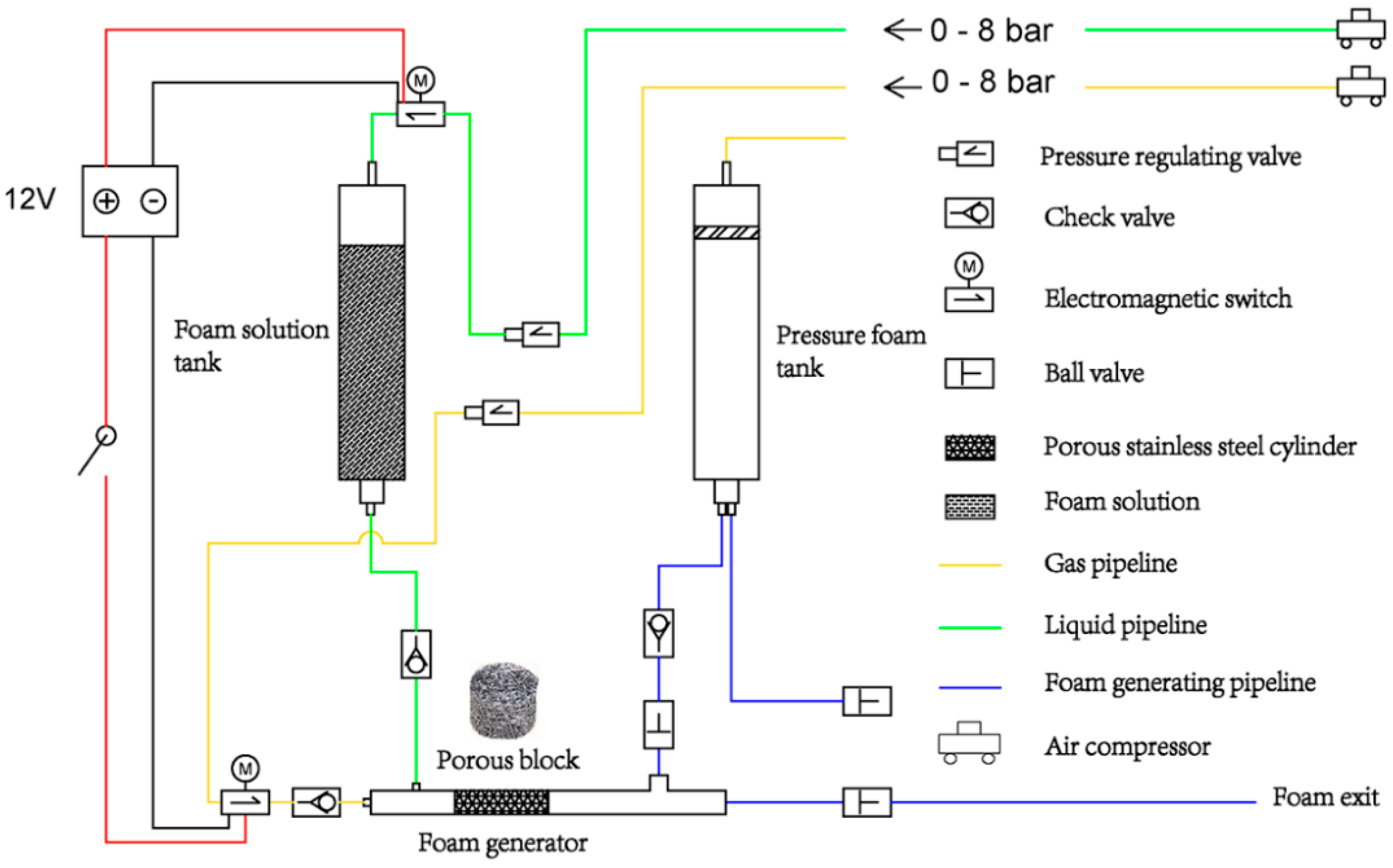
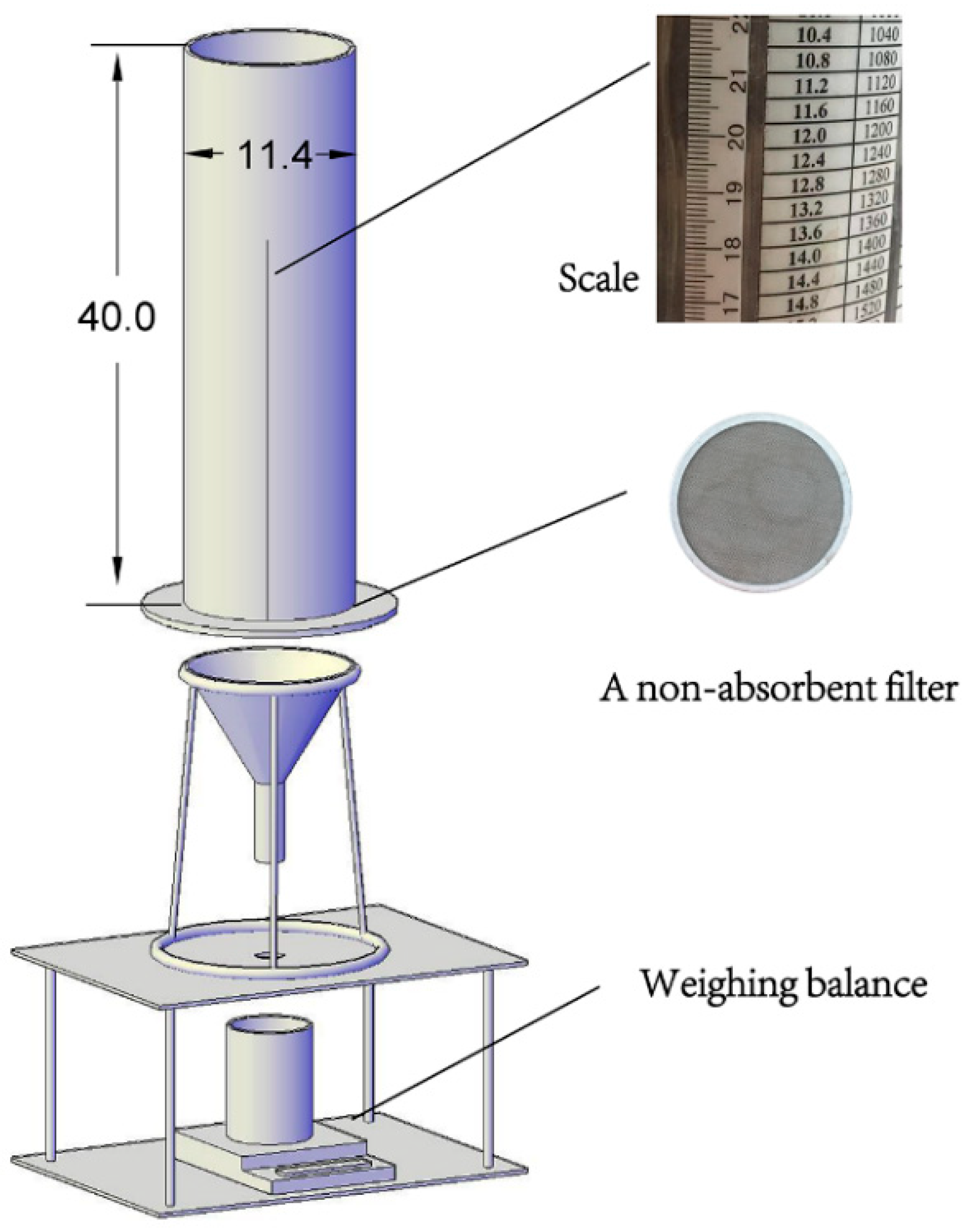
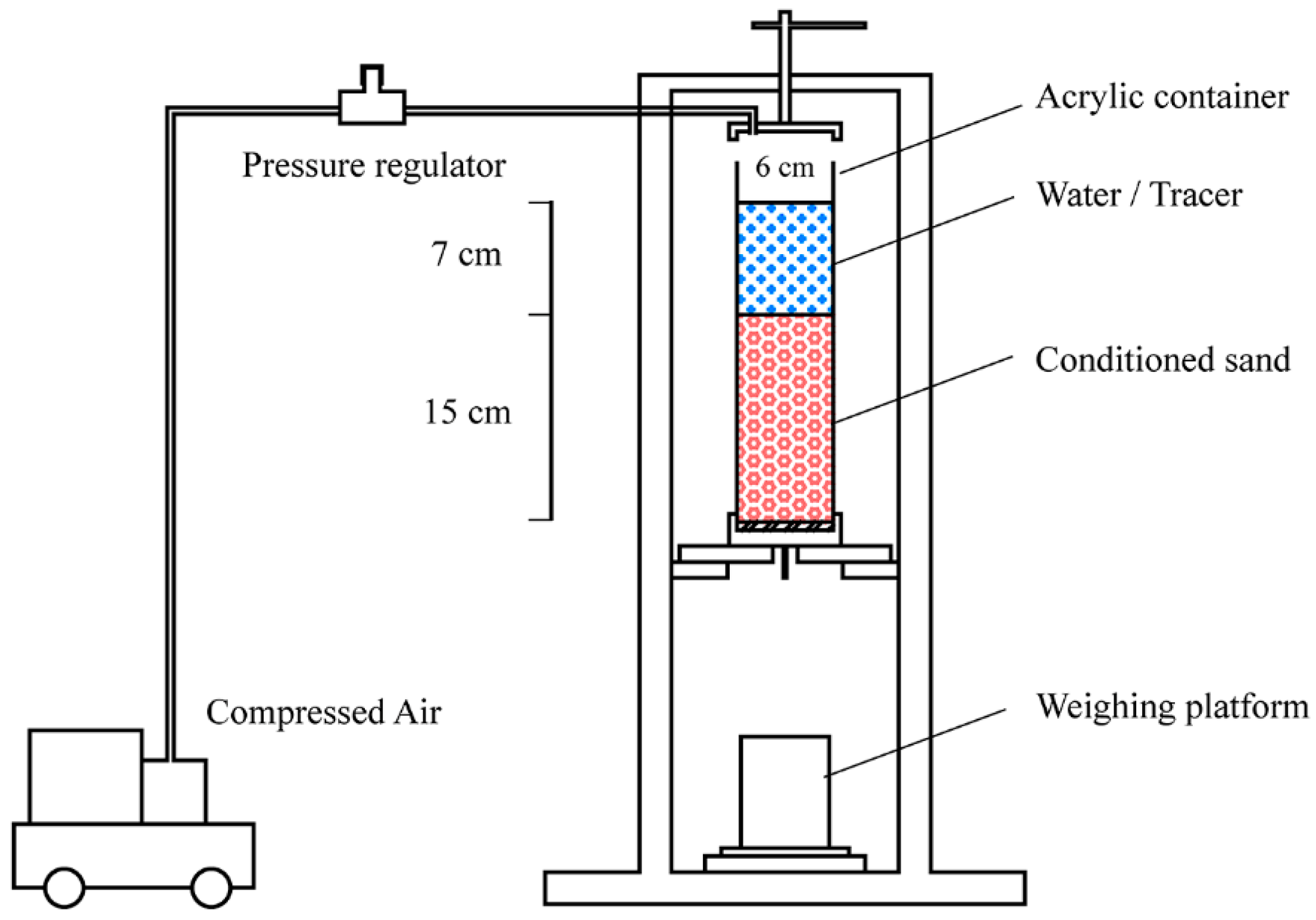

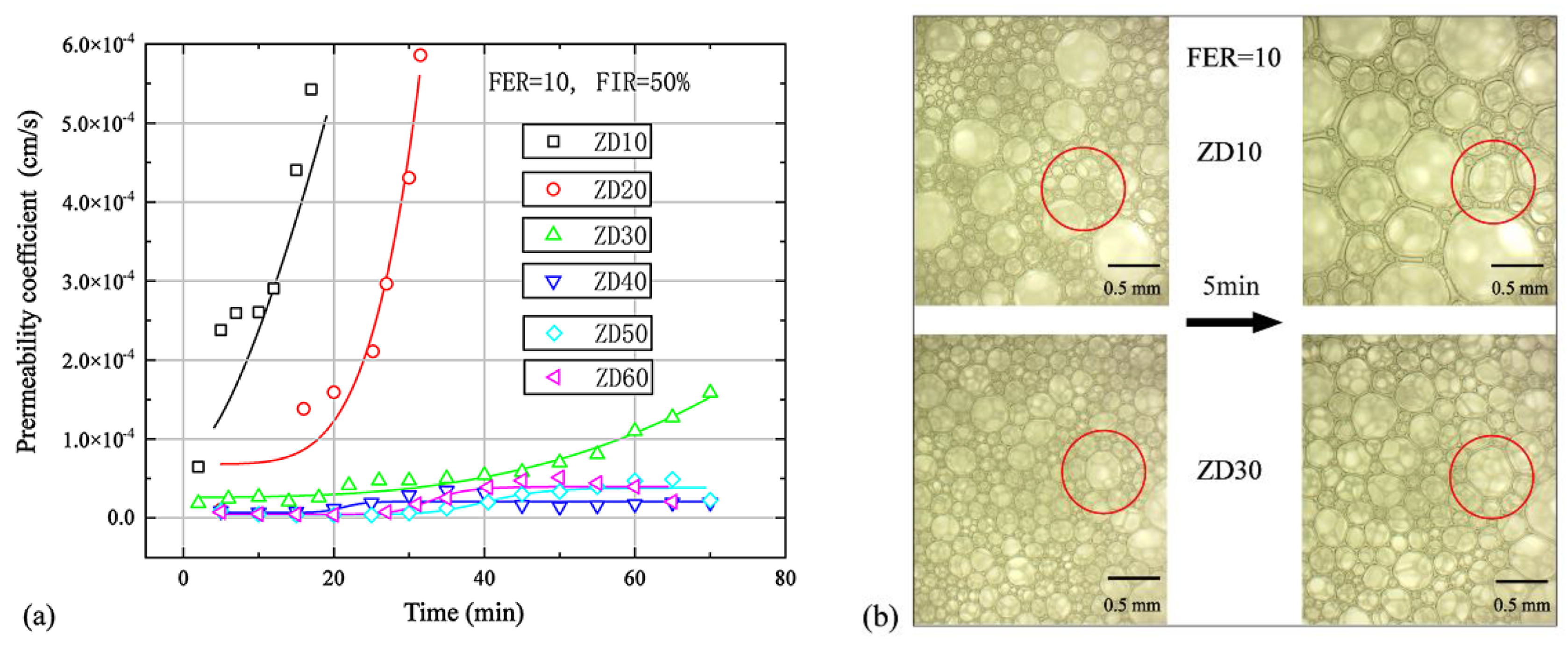
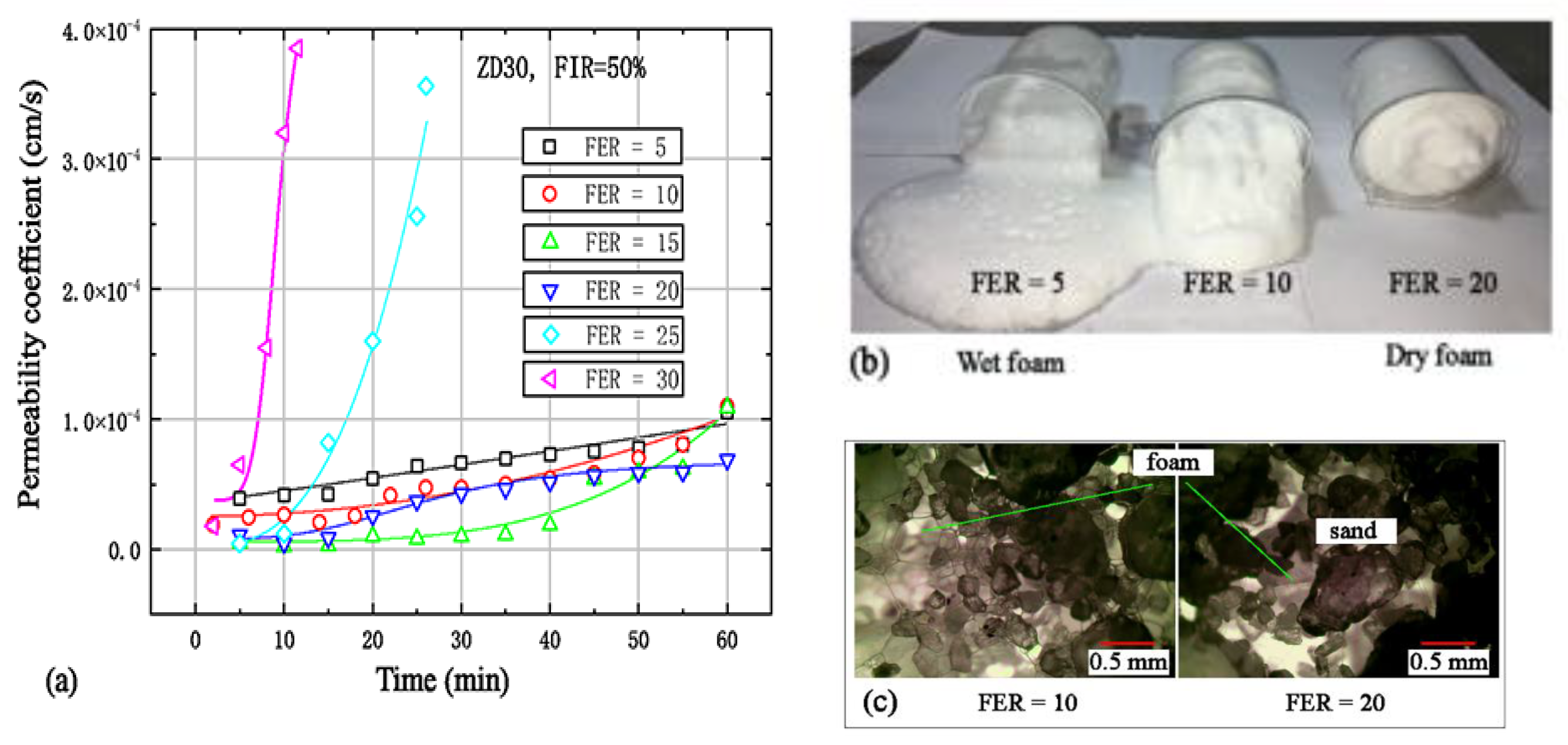

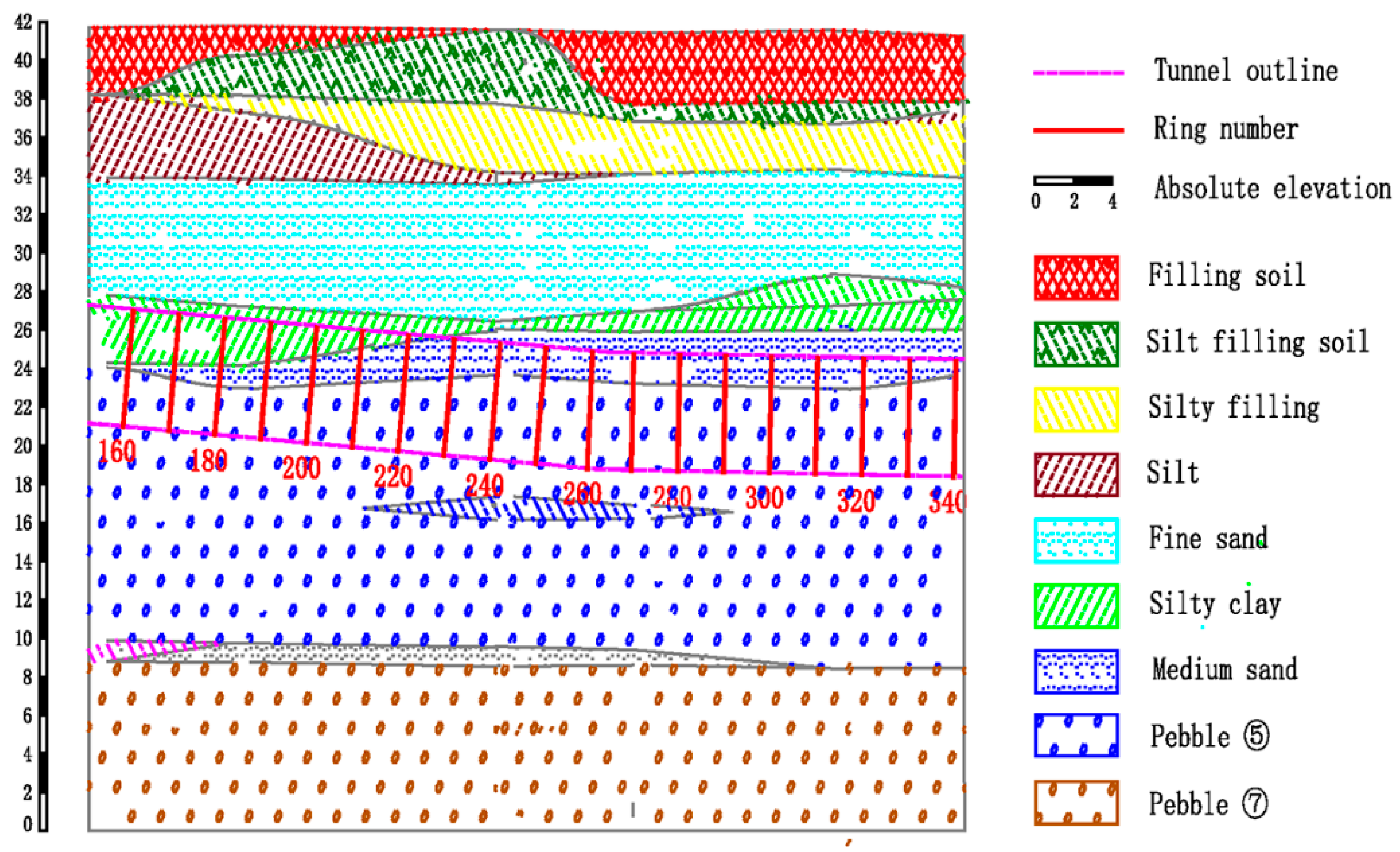

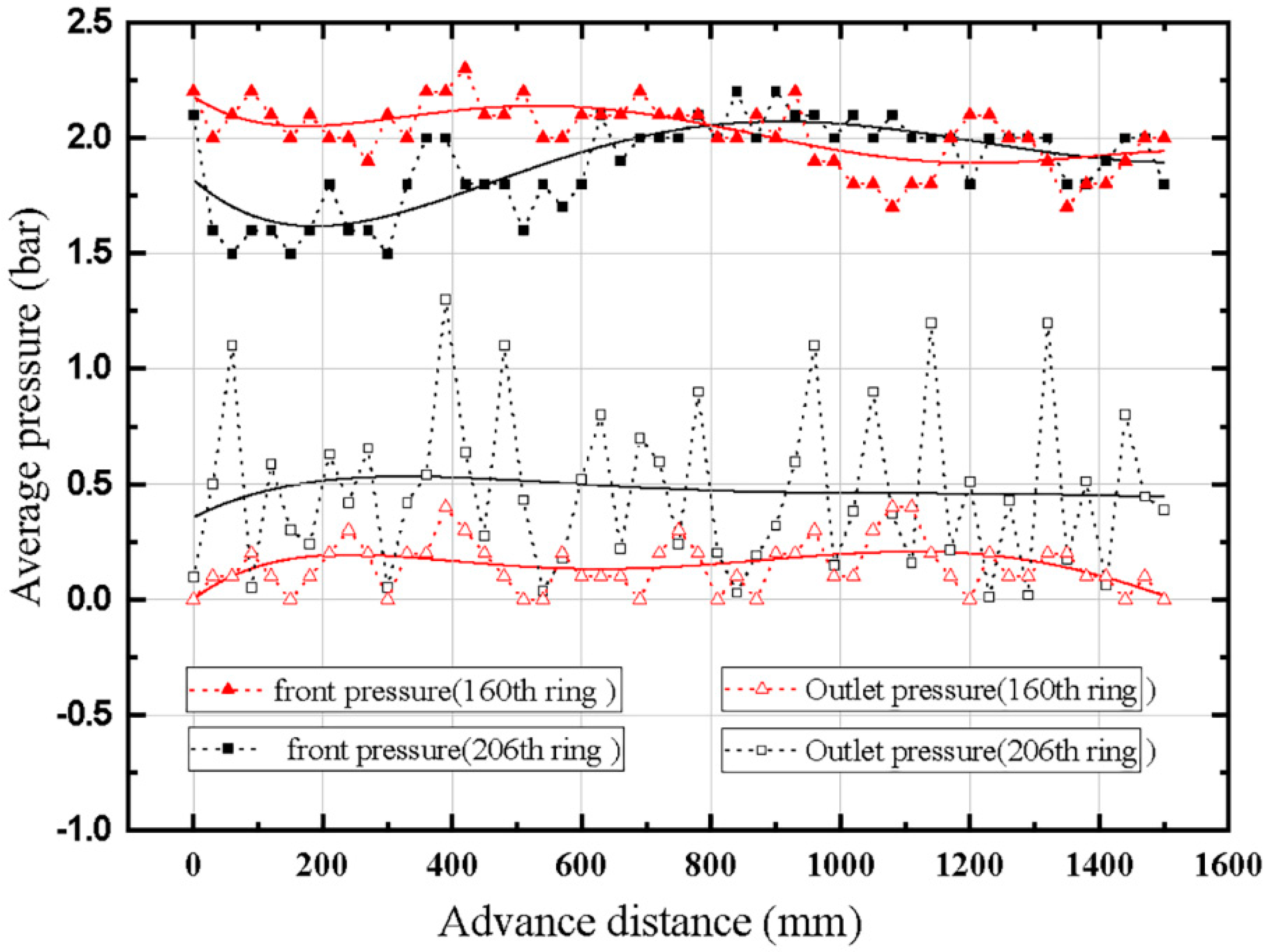
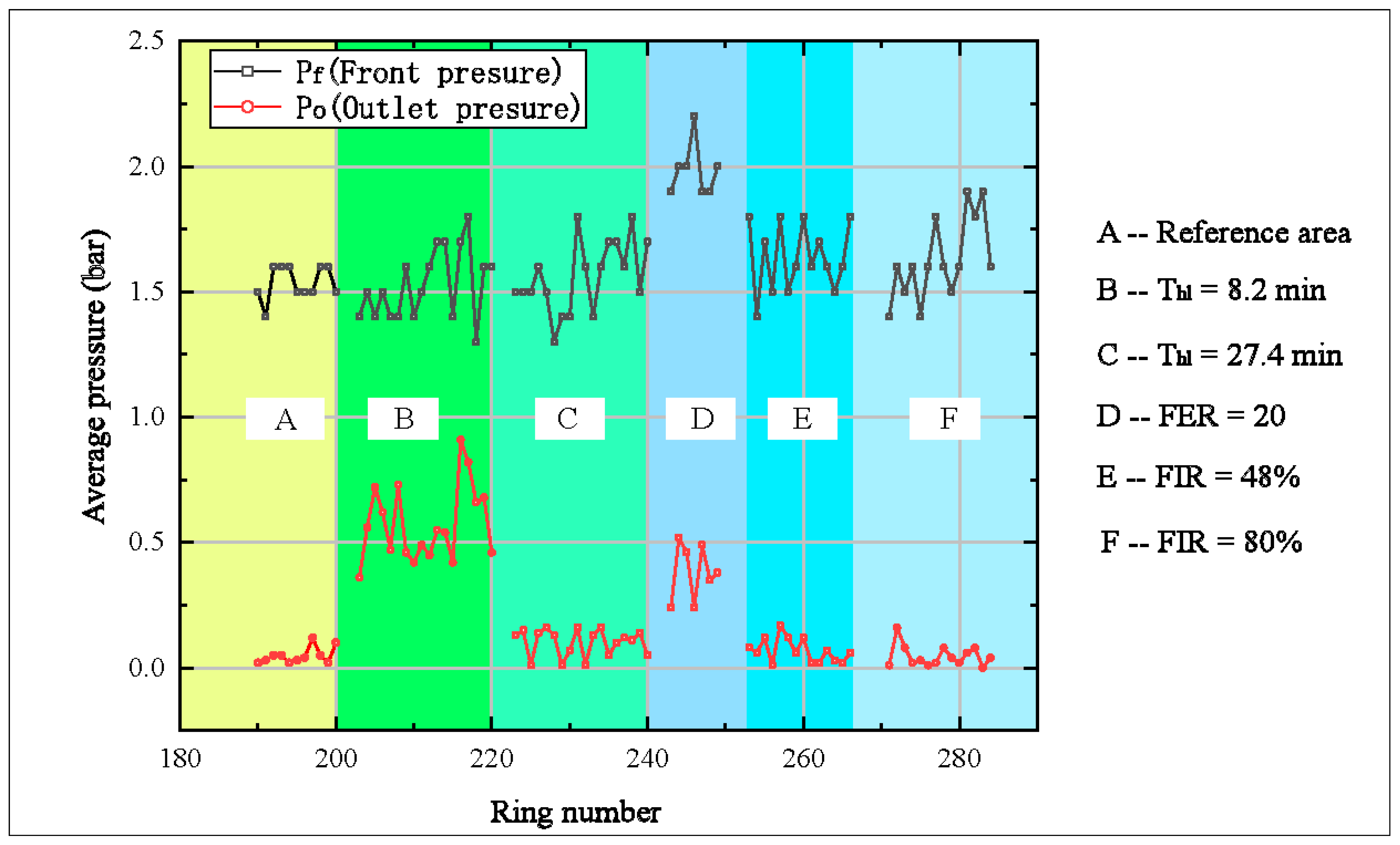
| Foaming Agents | Concentration, wt% | Thl, min | Code |
|---|---|---|---|
| FER = 10, Hf = 20 cm | |||
| ZDF-01 | 5 | 9.5 | ZD10 |
| ZDF-02 | 21 | ZD20 | |
| ZDF-01P | 27.4 | ZD30 | |
| ZDF-03 | 39.5 | ZD40 | |
| ZDF-03P | 47.4 | ZD50 | |
| ZDF-03AB | 58.2 | ZD60 |
| Standard Sand | Foam | ||||
|---|---|---|---|---|---|
| Weight (g) | Density (g/cm3) | Volume (mL) | FIR (%) | FER | Weight (g) |
| 750 | 1.78 | 420 | 25 | 10 | 10.5 |
| 50 | 10 | 21 | |||
| 75 | 10 | 31.5 | |||
| 100 | 10 | 42 | |||
© 2020 by the authors. Licensee MDPI, Basel, Switzerland. This article is an open access article distributed under the terms and conditions of the Creative Commons Attribution (CC BY) license (http://creativecommons.org/licenses/by/4.0/).
Share and Cite
Zhou, X.; Yang, Y. Effect of Foam Parameters on Cohesionless Soil Permeability and Its Application to Prevent the Water Spewing. Appl. Sci. 2020, 10, 1787. https://doi.org/10.3390/app10051787
Zhou X, Yang Y. Effect of Foam Parameters on Cohesionless Soil Permeability and Its Application to Prevent the Water Spewing. Applied Sciences. 2020; 10(5):1787. https://doi.org/10.3390/app10051787
Chicago/Turabian StyleZhou, Xiong, and Yuyou Yang. 2020. "Effect of Foam Parameters on Cohesionless Soil Permeability and Its Application to Prevent the Water Spewing" Applied Sciences 10, no. 5: 1787. https://doi.org/10.3390/app10051787




